One year later, new dangers threaten Ukraine’s embattled Zaporizhzhia nuclear plant
By Edwin Lyman | February 28, 2023
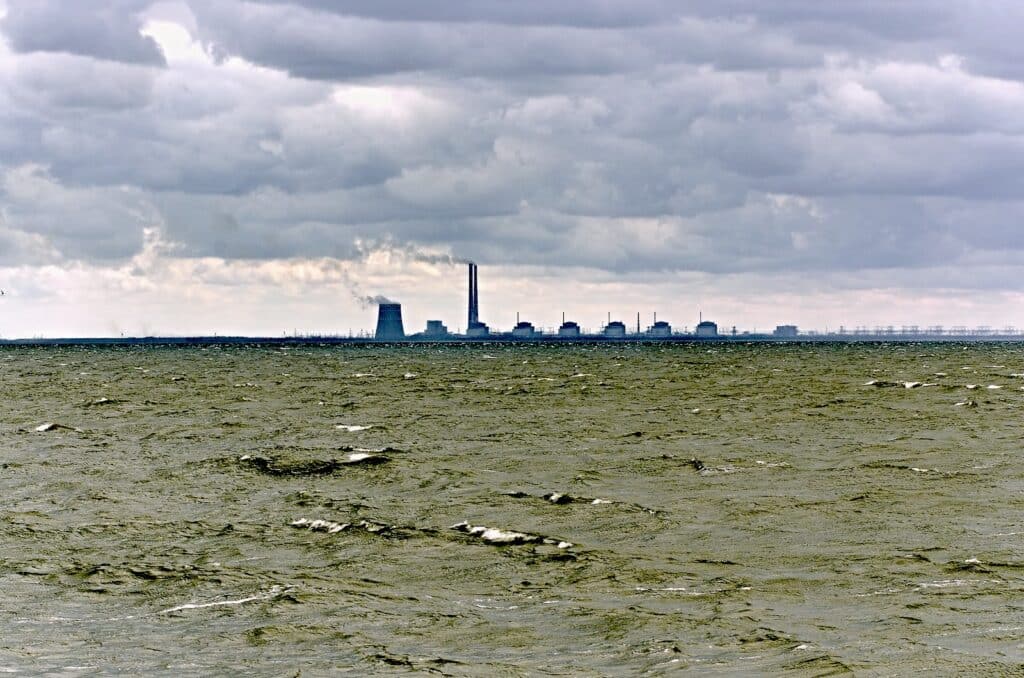
Nearly a year after Russia’s March 4, 2022 seizure of the Zaporizhzhia nuclear plant in Ukraine, the facility remains in a precarious state. The site has endured fire, structural damage, and five temporary losses of all offsite power as the result of shelling, and the grid connection remains fragile. Unprecedented attempts by Rafael Grossi, the director general of the International Atomic Energy Agency, to create a “safety and security protection zone” around the plant have so far been unsuccessful. And now events many miles away from Zaporizhzhia are posing an additional threat to critical aspects of its operations, reinforcing the need for urgent actions to ensure its safety as fighting intensifies.
Like most nuclear plants, the six-reactor Zaporizhzhia facility is situated near a body of water that serves as its ultimate heat sink (UHS), an assured supply of water to its “essential service water system” that enables removal of the radioactive decay heat from shutdown reactors and spent fuel pools. That water system is also used to cool equipment such as the emergency diesel generators needed to provide electrical power when offsite power is lost. (It’s important to note that the essential service water system is distinct from the residual heat removal system that provides cooling directly to the fuel in the reactors in cold shutdown. The residual heat removal system, a closed loop, transfers heat from the reactor cores through heat exchangers to the essential service water system, which then carries the heat away to the UHS.)
At Zaporizhzhia, the water supply for the UHS is provided to cooling ponds from the Kakhovka Reservoir, 80 miles downstream of the plant on the Dnipro River. But in recent weeks, reports indicated that the reservoir’s water level had decreased and stood at 13.98 meters on February 15, according to the International Atomic Energy Agency. Petro Kotin, the president of Ukraine’s state-owned nuclear utility Energoatom, said that if the reservoir level drops below 12.8 meters, then Zaporizhzhia will face an emergency; below 12 meters the situation would become “critical.” If the water level gets too low, then the cooling ponds themselves will not be replenished, and the essential service water system will fail. (Ukraine has accused Russian forces controlling the reservoir dam of draining its water, although, as is typical in this conflict, Russian authorities have denied responsibility and blamed Ukrainian forces for the drop in water levels.)
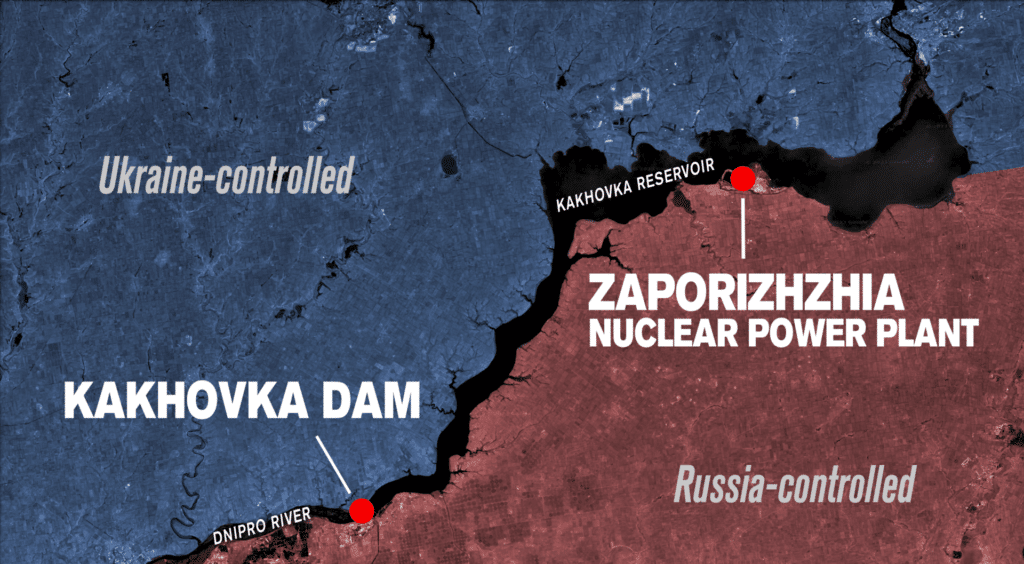
A before and after set of satellite images of the Kakhovka reservoir on the evening of the invasion of Ukraine in February 2022 and in January 2023, showing recent changes to the shoreline. (Landsat / USGS)
Learning from Fukushima. What are the safety implications if the UHS is lost? In general, even after reactors are shut down, their highly radioactive irradiated fuel continues to produce large quantities of decay heat that must be efficiently removed to prevent the fuel from overheating and melting. The massive tsunami that caused the March 11, 2011 triple nuclear reactor meltdown at the Fukushima plant in Japan not only disabled the electrical systems needed to run coolant pumps and other equipment, but also destroyed the seawater pumps that were integral components of the UHS. Even if the plant had recovered electrical power in time to allow operation of the cooling pumps, the loss of the UHS would have posed a significant obstacle that operators would have had to overcome, as the pumps carrying steam from the reactors wouldn’t have had an effective means of disposing of the heat.
Fortunately, there is a reduced risk today that the current situation at Zaporizhzhia would lead to an outcome as dire as Fukushima. First, all six of the reactors have been shut down for at least several months (four in “cold” shutdown and two in “hot” shutdown). Since the decay heat rate decreases significantly over time in a shutdown reactor—dropping by nearly a factor of 100 a few months after shutdown—operators would have a grace period on the order of days, rather than hours, to mitigate a loss of UHS before temperatures rose high enough to cause reactor fuel damage.
Second, the site is better prepared to deal with such an event today than it would have been before Fukushima. In the accident’s aftermath, Ukraine, like many countries, carried out stress tests and developed plans for keeping its reactors safe indefinitely under Fukushima-like conditions—not only the long-term unavailability of electrical power, but also loss of the UHS. These plans required acquiring mobile equipment, such as diesel-powered pumps, that operators could use instead of the normal equipment to keep reactors cool without the need for electricity, for instance by feeding water into the steam generators and releasing the steam to the atmosphere. The Ukrainian regulator proposed emergency procedures to connect cooling pumps to the fire water system in the event that a tornado caused a loss of access to the UHS or an earthquake caused the Kakhovka dam to fail. However, the fire water system would need to be replenished from somewhere. The regulator suggested using a suction dredge ship to supply water to the fire system. In its 2012 peer review of Ukraine’s stress tests, the European Union recommended that the national regulator should “further analyze in detail … water supply sources” in the event that the normal supply was lost. Although Ukraine reported that this action had been completed in 2021, the feasibility of the dredge ship or other approaches is far from certain, especially in the context of the current military conflict. Ukraine and Russia, with the assistance of the IAEA, need to ensure availability of an alternative water supply in the event that the Kakhovka reservoir level decreases further. And even with an adequate water supply, maintaining these alternative arrangements indefinitely would require a Herculean and sustained effort by plant personnel to operate all the equipment at six reactors manually—comparable or greater to what was needed at Fukushima.
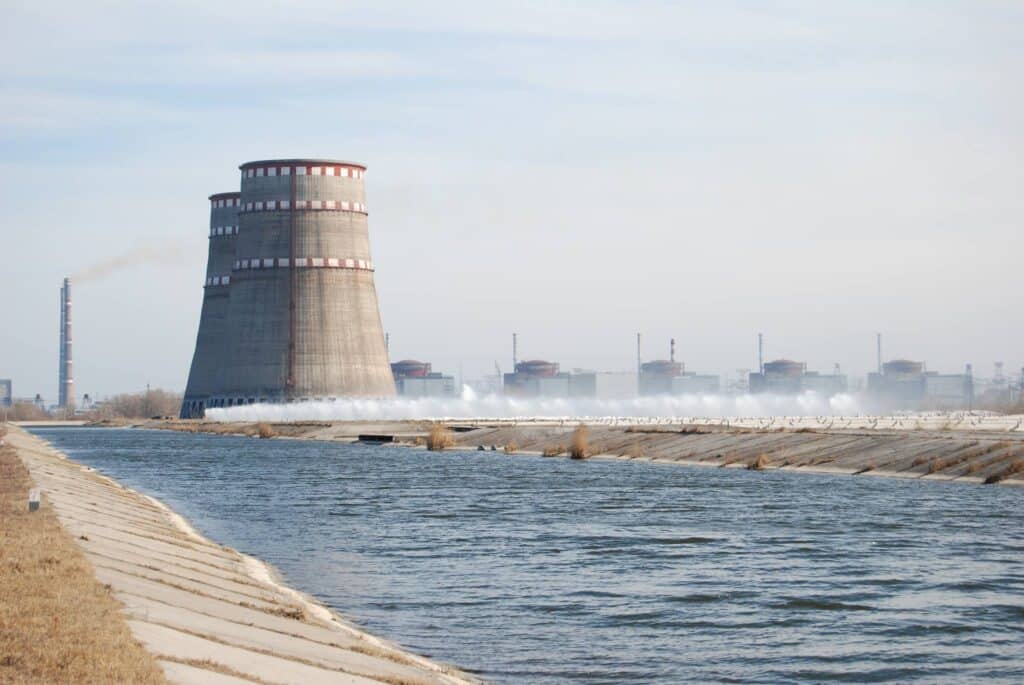
Still in deep water. Although the risk is lower today at Zaporizhzhia than when all the reactors were at full power, the danger remains. One pipe break, valve failure, or operator error could jeopardize the cooling of one or more of the shutdown cores or spent fuel pools—an event that would be compounded by a loss of offsite power and/or the UHS. Of particular concern are reactor units 5 and 6, which operators are maintaining in “hot shutdown” mode. This means that even though the reactors are not generating power through nuclear fission, the coolant temperature is kept above the boiling point of water, and the residual heat generated from radioactive decay is used to produce steam for plant operations. It is unusual for a nuclear plant to remain in this mode for a sustained period of time, as it is typically only encountered as a transitional phase between refueling and full power operation. Because (based on the example of Western-designed reactors) a number of safety systems are unavailable or cannot be automatically actuated in this mode, operating a plant in this state still comes with an elevated risk if an abnormal event occurs. In that case, operators would have to take prompt manual actions to prevent the temperature from rising further. But given that the remaining operators at the site are already under great stress, and that the Russian occupiers are reportedly blocking Ukrainian staff from maintaining the requisite training, the potential for them to make mistakes in a crisis and possibly exacerbate the situation is a very real one.
Given these circumstances, it is understandable why the Ukrainian regulator recently announced that it would not permit Zaporizhzhia to return to power operation again until the Russian occupation ends and it could assure the safety of the facility. The challenge Ukraine faces with Zaporizhzhia, as with all of its nuclear facilities, is balancing the need for the power they produce against the potential for a nuclear disaster in the face of continued Russian attacks on the country’s energy infrastructure. No country should be forced to make such a decision. This is why, if nuclear power is to continue to play a role in providing energy for the world, the international community must ensure that nuclear facilities and their supporting infrastructure are considered strictly off-limits in any military conflict.
Together, we make the world safer.
The Bulletin elevates expert voices above the noise. But as an independent nonprofit organization, our operations depend on the support of readers like you. Help us continue to deliver quality journalism that holds leaders accountable. Your support of our work at any level is important. In return, we promise our coverage will be understandable, influential, vigilant, solution-oriented, and fair-minded. Together we can make a difference.
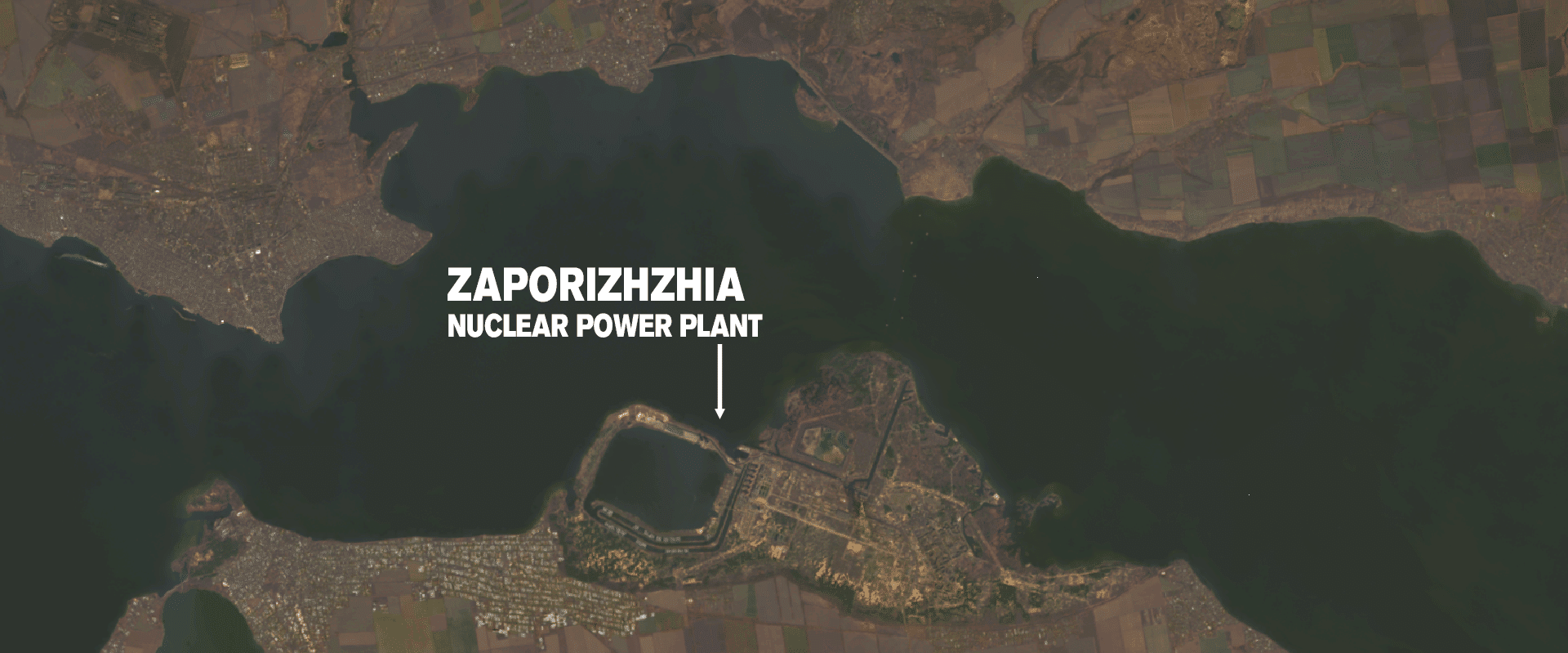
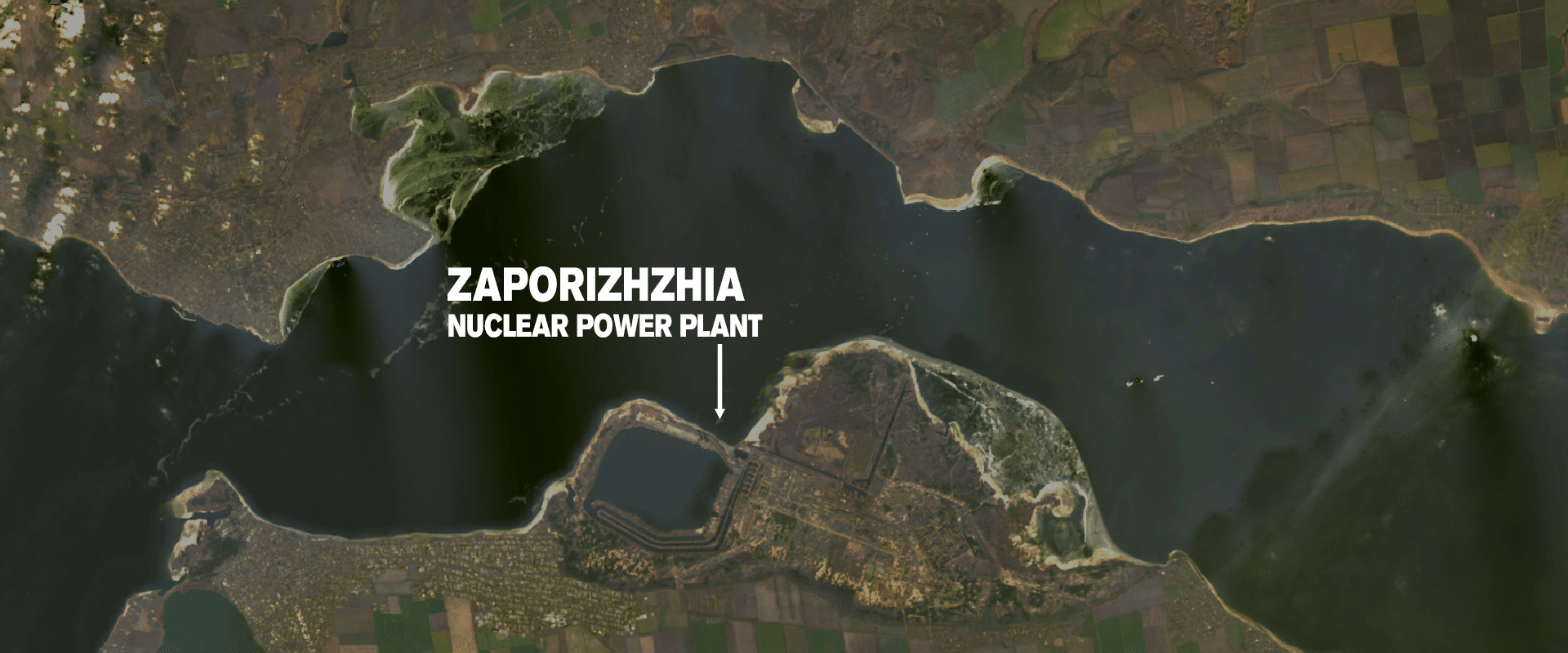


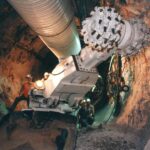
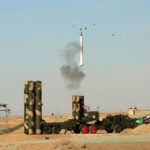
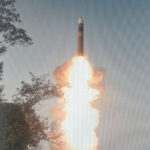




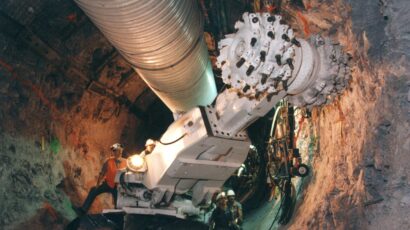

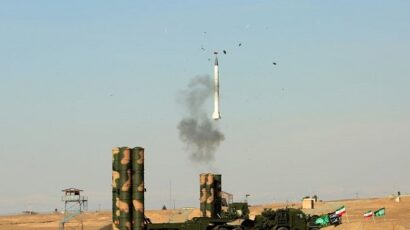



UPDATE: March 9, zaporizhzhia has lost its external power again, is relying on diesel generators as a last line of defense, the 6th time since the invasion, according to the IAEA